Customer retention often gets overlooked – in the chase for awareness and conversions, we forget how important it is to keep a customer once they go through their first purchase.
But, making sure your customers have a good enough experience with your brand that they want to keep making purchases can prove an invaluable business strategy.
Having returning customers means you’re doing something right. It means that there are people out there who consider you a leader in the industry and gladly give you their money. It’s a possible start of long-lasting relationships that can be beneficial for both you and your users.
So, how do you go about creating these relationships and improving your customer retention? Let’s learn more about this concept and go through some customer retention strategies that you can instantly implement to your business.
- What is customer retention and why does it matter?
- How do you measure customer retention?
- #1: Provide great customer service
- #2: Make your website shine
- #3: Use retargeting
- #4: Explore website personalization
- #5: Take care of your onboarding process
- #6: Use testimonials
- Increasing customer retention: the conclusion
What is customer retention and why does it matter?
Customer retention is the ability of your business to keep customers over a longer period. For an eCommerce website, this means having repeat customers who keep making purchases in your webshop. For subscription-based businesses, this could mean keeping customers subscribed for longer without them defecting to another business.
Although not exactly the same, customer retention is often used interchangeably with customer loyalty, which also signifies the likelihood of your customers coming back to your business.
It’s important to remember that high customer retention rates are usually achieved through a careful implementation of long-term strategies. It’s almost impossible to find a magic solution to this issue overnight.
Customer retention is important from a business standpoint as it can prove to be extremely profitable. In fact, it can cost up to 25 times less to keep an existing customer than to capture a new one.
Marketing Metrics also agrees that you have a much better chance of selling to an existing customer than a new prospect.
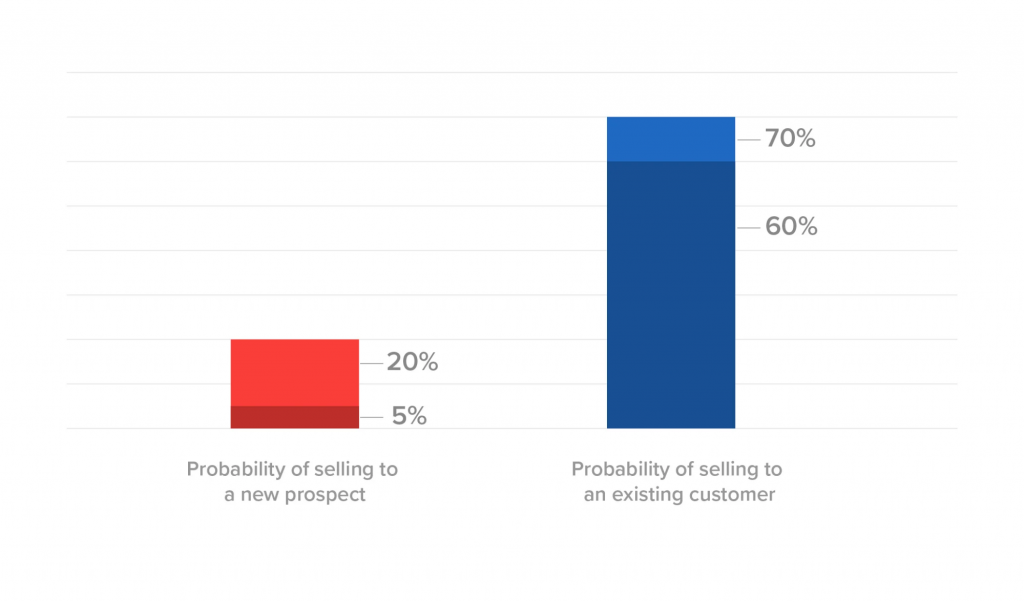
By extension, higher customer retention rates usually mean better ROI, as you don’t have to spend that much money if you focus on these long-time customers.
How do you measure customer retention?
Before we can start going through all the things you can do to increase your customer loyalty and retention, let’s learn which metrics you should be focusing on. The only way to tell whether your customer retention plan is really working is to choose your KPIs and track changes over time.
Customer churn is probably your most important KPI. This stat tells you the rate at which your customers stop doing business with you. You want to keep this number as low as possible.
To calculate your monthly churn rate, simply take the number of users you had at the beginning of the month, subtract from it the number of users you had at the end of the month, and divide the difference with the number of users you had at the beginning of the month.
Here is an example from HubSpot that uses this formula:

You’ll also need to take a look at your Revenue Purchase Ratio (the percentage of your customers who have come back to make a purchase), Net Promoter Score (how willing your users are to recommend your business to others), and Customer Lifetime Value (the revenue generated by a single customer since they made their first purchase).
Of course, you should do your own research and explore all the possibilities but monitoring these KPIs is a great place to start.
Now that we got that covered, let’s go into the 6 ways to increase customer retention!
#1: Provide great customer service
You can’t expect someone to become a repeat customer if you don’t give them great customer service.
More than resolving issues and providing technical support, you’ll want your customer service agents to be polite, friendly, and offer a helping hand to the customers at every step of the way.
Here are some things you need to take care of to improve your customer experience.
Reduce your response time
The last thing you want to do to a customer in need of assistance is to make them wait. Work on your response times and prioritize getting back to your users as soon as possible, even if just to thank them for their inquiry and let them know you’re handling it.
According to Statista, chatbots and live chats are the best customer service channels in terms of response times, so it might make sense to invest in those. That way, you’ll be available at the very moment your customers need help – while they’re browsing through your website.

Personalize your customer service
Allow your customer service agents to be direct with your customers and approach them as spontaneously as possible. That means not sticking too much to scripts, using customers’ names, and changing the communication approach based on each user.
Additionally, you should consider showing your agents’ names and pictures if your customer service platform allows you. This will make the users feel like there’s actually another person on the other side – someone who will listen to their problems and provide solutions.
Be available on multiple channels
To both reduce your response times and provide your customers with the best experience, you should make sure they can contact you at multiple touchpoints.
It goes without saying that they should have a helping hand while browsing through the website. But, your social media pages, email, and even phone lines should all be open for customer inquiries.
That way, you’ll fulfill everyone’s expectations and make things more convenient for your users.
#2: Make your website shine
Your customers will be more likely to return to your offer if you optimize your website to provide them the best possible browsing experience.
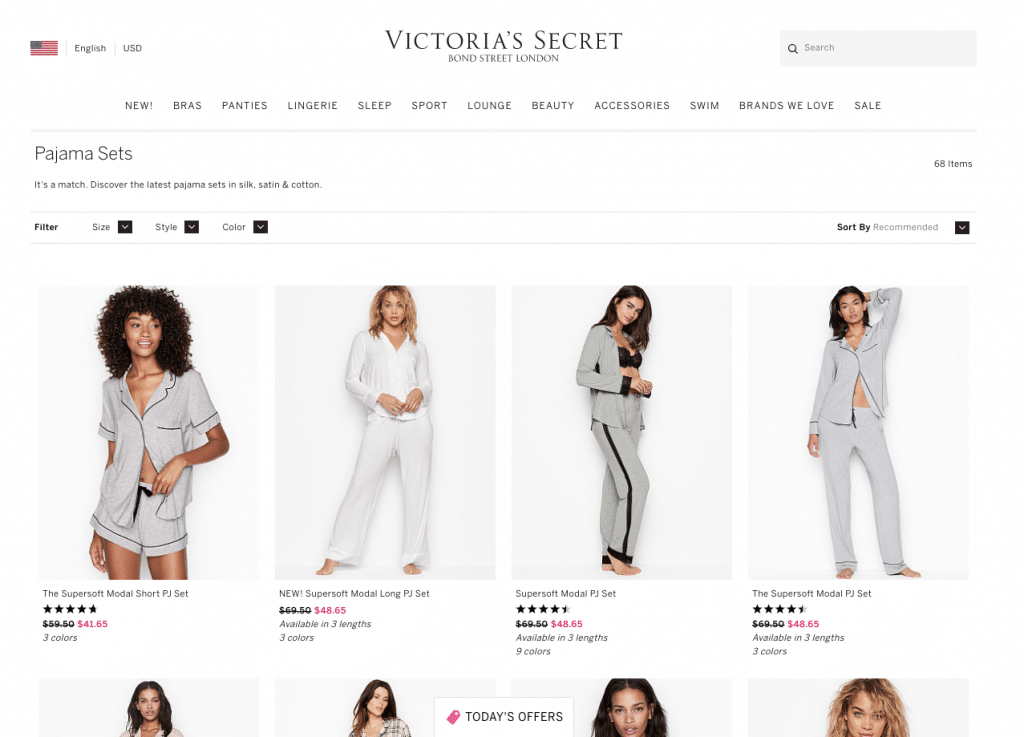
What does this mean?
Here are some questions to put on your checklist to make sure your website is optimized according to the latest standards.
- Is it mobile–friendly? Not only do a lot of people visit websites from their smartphones, but Google actually prefers to show optimized websites in its search rankings. Optimize your website for smartphones to make it more pleasant for your users and get more visits.
- Is there enough white space? Contrary to its name, white space can be of any color – it simply represents the blank space between design elements. Having more white space will let your website “breathe” and help the customers focus on the information that matters.
- How long do your pages load? It shouldn’t take more than three seconds for a single page to load on your website. Customers are impatient and if you have bad loading times, you might want to consider optimizing your images or switching your web hosting providers. If you are an eCommerce business, you can also implement eCommerce platform migration for better site speed.
- Do you have enough CTAs? Users always need to know where to go and what to do next. That’s what CTA buttons are for – they make the purchasing process easier and quicker.
Stay on top of the latest UX trends and ensure that your website offers a pleasant experience to your visitors!
#3: Use retargeting
Retargeting is a type of online advertising that allows you to reach users based on their previous actions with your brand. In simple terms, it allows you to target those users that already displayed purchase intent and get them to come back to your website and complete the purchase.
It’s one of the best retention strategies: it’s cost-effective, gets good results, and can help you build strong relationships with your users.
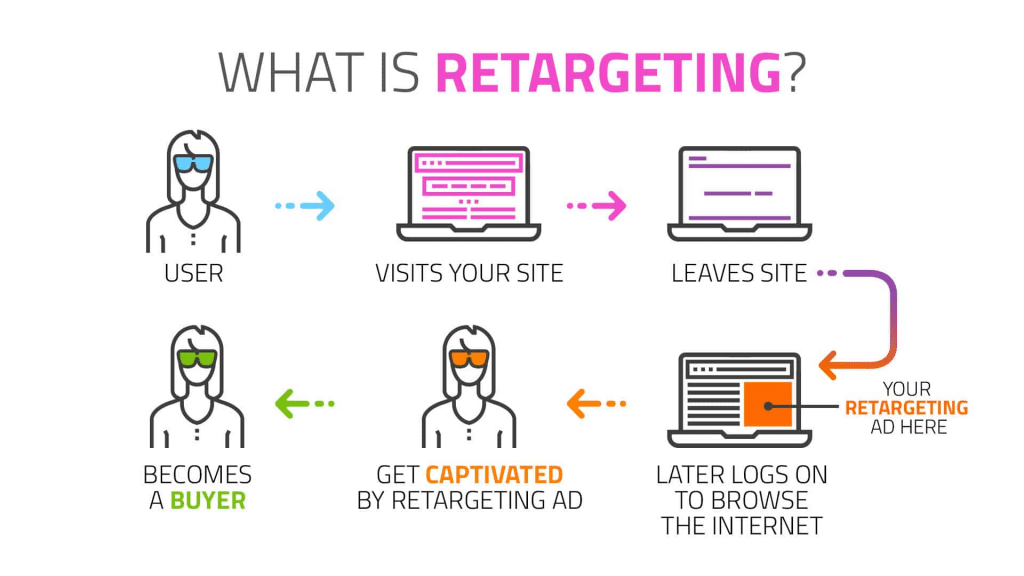
The great thing about remarketing is the fact that you can do it through multiple channels. You can set up a remarketing tag on your website, collect the visitors through their cookie IDs, and re-engage them almost anywhere on the Internet.
Google Ads, Facebook, and email are among the most popular marketing channels that you can use remarketing with. If you want to use it on Facebook, you’ll need a piece of code on your website called the Facebook Pixel. You can put it on all the pages on your website, which allows you to segment your audience even further.
For example, you’d be able to create separate campaigns for people who viewed men’s running shoes, women’s lingerie, and exercise equipment.
You will notice that by displaying advertisements based on people’s interests, you can target them; large corporations do the same. Have you ever wondered why you can see destinations videos , photos, tours and travel flyer after searching for destination locations on Instagram and Facebook? or food images after searching for pizza and burgers, it’s all about reaching out to the public based on their interests.
Most email marketing tools also allow you to set up events that, when triggered, instruct the tool to send an email to the customer. One of the most popular such events is, for example, putting a product in the shopping cart.
#4: Explore website personalization
When you take care of the core website issues like UX, the order process, etc. – you might want to consider website personalization.
You can personalize your website in many ways, starting from the offer. Some popular websites like Netflix, TED, and Amazon personalize your content based on your previous interests. That increases the chances of you consuming more of that content or, in the case of Amazon, making a purchase.
You can also customize various other things, like images, text, and CTAs. With Hyperise, you can do all of this with no prior coding knowledge. For example, this is how our homepage would look for Apple’s Tim Cook:
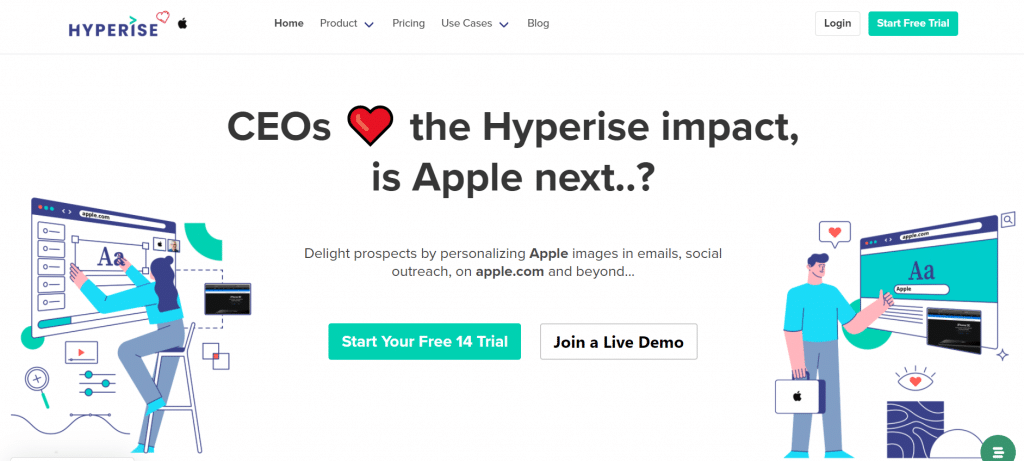
We’ve personalized for his name, company name, company logo, and website. And that’s just one example of the things you can do with Hyperise.
You can also use it to personalize your B2B outreach efforts or your website chat and identify anonymous website visitors.
Register for a free trial and explore all the options that Hyperise offers!
#5: Take care of your onboarding process
If you want your customers to come back to your brand after their first purchase or after their trial period ends, you could start thinking about placing some additional value on that first purchase/registration.
Here is what we mean by this:
- “Thank you” messages. To onboard your new customers, you can thank them for their first purchase/subscription. It’s a great way to embrace a more personal approach and make your customers feel valued. You can start a strong relationship and impress your users, especially if you run a small business that builds more direct connections with its customers.
- “Welcome videos”. Subscription-based businesses sometimes use onboarding videos to welcome their new customers. That’s a good opportunity to introduce themselves and give their users some tips on where to find useful information. You can also use other customer service videos to engage your users after their first subscription/purchase.
- Product demos. If what you’re selling needs some time to set up and get familiar with, it could be a good idea to give your new users a demo or a tutorial. It can be a video or a textual instruction with pictures – whatever you choose to do, it will likely be useful. If you want to take it a step further, consider creating an online course to educate them about your product, but also provide value by educating them on other important topics to become a thought leader in your industry.
#6: Use testimonials
Finally, one of the most interesting reasons why users may come back to your offer is FOMO – Fear Of Missing Out. If it looks like your brand has this great community with people who love to share their stories and be a part of your success, your users might be intrigued.
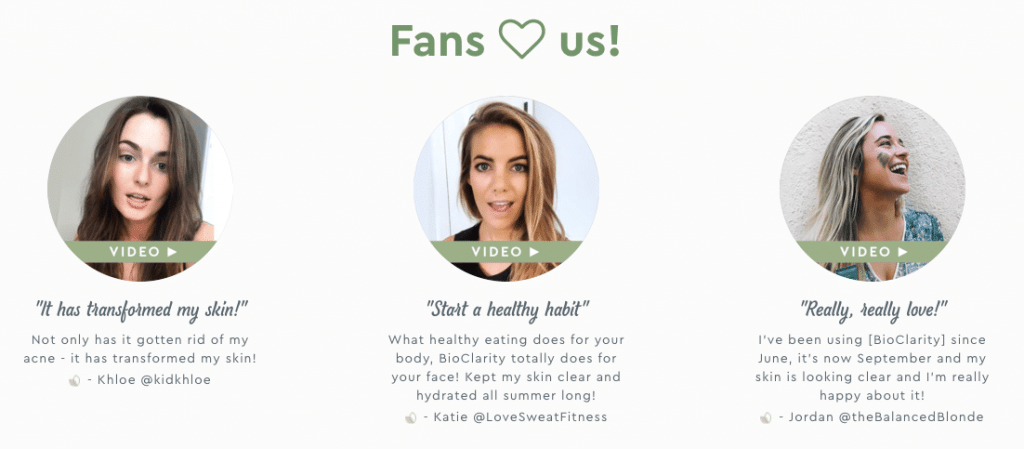
You can use testimonials to create this sense of community. Research the best testimonial tools and find the one that allows you to implement testimonials on your website without too much hassle.
Give your long-time customers an incentive to write you a testimonial or simply find a testimonial template online and write some of them yourself. Ideally, however, you’ll want to be as authentic as possible and use real stories.
Increasing customer retention: the conclusion
Turning a first-time buyer into a returning customer isn’t easy – and it shouldn’t be.
The competition is fierce. Online shoppers now have so many opportunities to choose from, that having someone stick with you for years is almost a luxury. It means that you’ve managed to provide your customers with a truly unique experience that gives them just what they need.
If you want to increase your chances of getting a returning customer, you might want to consider personalizing your website with Hyperise, using personalization trends like covered in this article will help significantly drive your outreach strategies.
Register for a free trial and see just how easy it is to tailor your website content to each visitor!